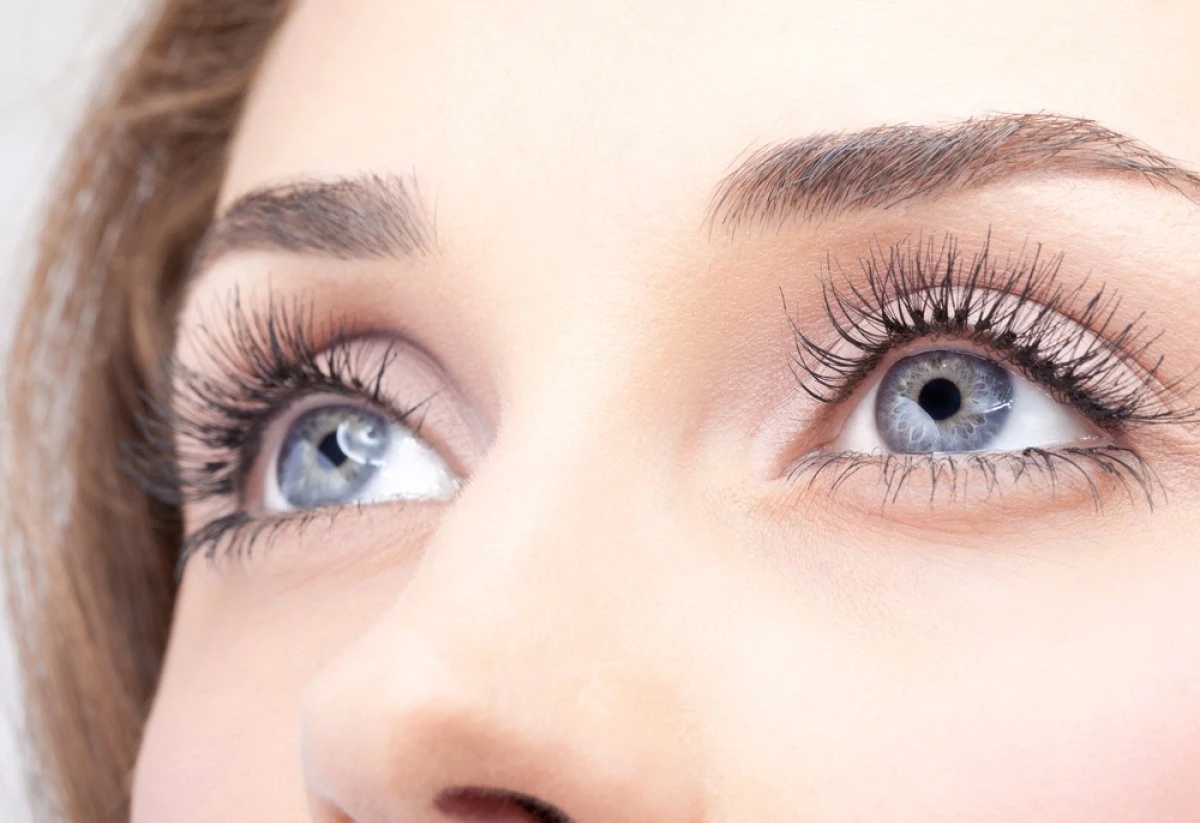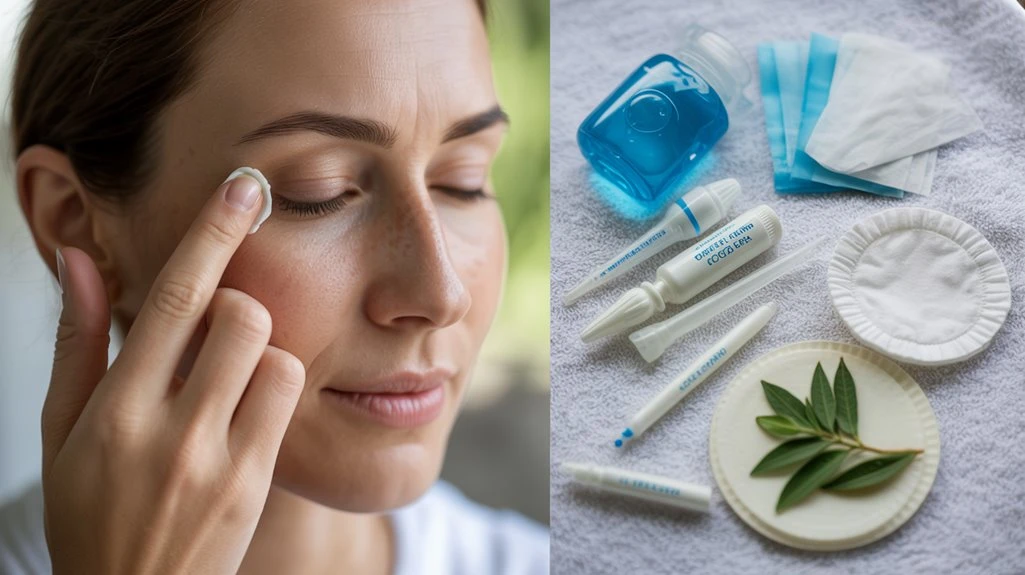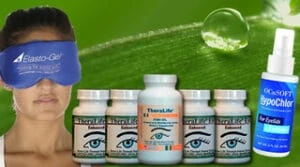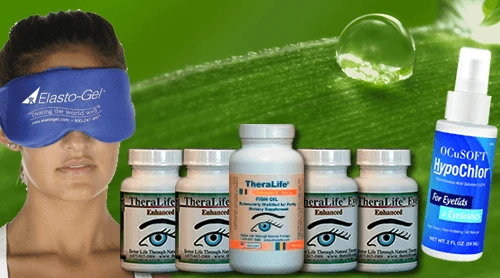To effectively manage ocular rosacea, TheraLife® offers unique solutions that prioritize oral eye treatment, distinguishing itself as the only company providing such comprehensive care. Their products are designed to soothe symptoms by reducing inflammation and supporting eye health through natural means. TheraLife® emphasizes the importance of a consistent regimen tailored to individual needs, which includes oral supplements that target the underlying causes of eye discomfort.
TheraLife® products benefit customers by focusing on an all-encompassing approach to eye care, ensuring relief from conditions like dry eyes, blepharitis, and more. With a commitment to natural healing methods, TheraLife® supports eye health by incorporating elements such as Omega-3 supplements and anti-inflammatory diets. Customers can also take advantage of their in-depth knowledge and resources to optimize their treatment plans.
For those experiencing persistent ocular rosacea, TheraLife® recommends a combination of therapies that include their unique oral treatments, regular specialist consultations, and lifestyle adjustments to avoid environmental triggers. By adopting TheraLife®’s strategies, individuals can achieve significant relief from symptoms and experience improved quality of life. Discover the personalized guidance and effective treatment options that TheraLife® offers to manage ocular rosacea with confidence.
Powerful Ocular Rosacea Relief With TheraLife
Chronic dry eye is a significant feature of ocular rosacea.
Treating dry eyes will reduce inflammation and keep ocular rosacea under control
Key Takeaways
- Use preservative-free artificial tears regularly to hydrate and soothe irritated eyes.
- Practice gentle eyelid hygiene with non-irritating, preservative-free cleansers to reduce inflammation.
- Take oral antibiotics like low-dose doxycycline under medical supervision to control ocular inflammation.
- Avoid environmental triggers by using humidifiers and protective eyewear in dry, windy, or smoky settings.
- Consult an eye care specialist for tailored treatment and prescription topical medications if symptoms persist.
Warm Compresses for Daily Relief
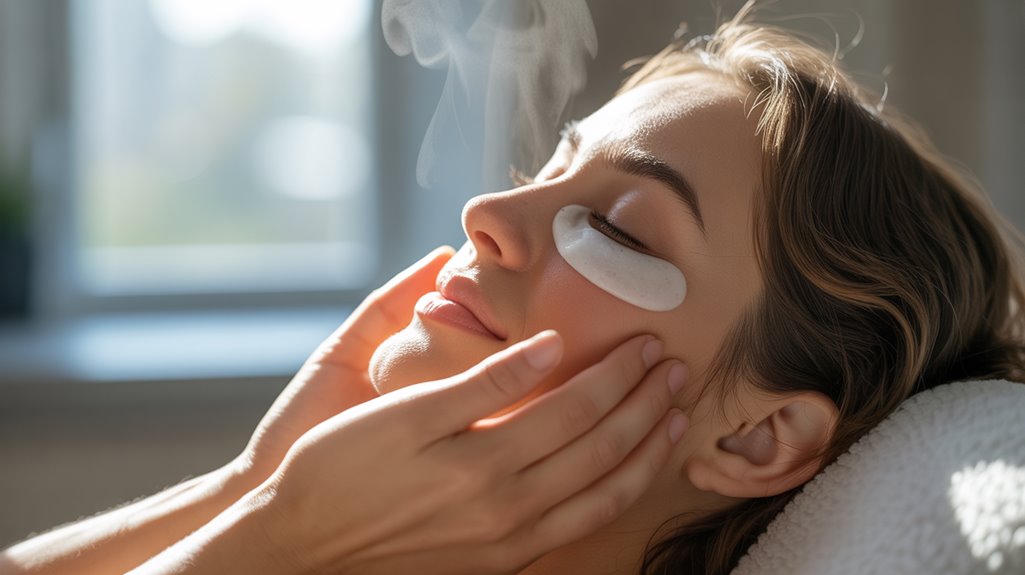
Although warm compresses are commonly suggested for various eyelid conditions, current evidence doesn’t support their effectiveness for daily relief in ocular rosacea.
You may encounter recommendations to include warm compress techniques in your daily eye routines, aiming to alleviate symptoms such as eyelid inflammation, irritation, or meibomian gland dysfunction.
However, clinical studies specific to ocular rosacea don’t demonstrate significant benefit from these interventions for routine symptom management.
While warm compresses can improve comfort in other eyelid disorders, their role in ocular rosacea remains unsubstantiated by robust data.
Instead of relying on these methods for daily relief, it’s important to focus your management strategy on treatments with proven efficacy for ocular rosacea, as individualized by your ophthalmologist or healthcare provider.
A promising approach involves novel immunomodulatory agents being explored in ongoing research, which could offer new avenues for effective management of ocular inflammatory conditions.
Gentle Eyelid Hygiene Practices
Many patients find that maintaining gentle eyelid hygiene can help reduce bacterial load and minimize inflammatory triggers associated with ocular rosacea.
You should utilize eyelid scrub techniques with non-irritating, preservative-free solutions specifically designed for sensitive periocular skin. Carefully cleanse the eyelid margins using a sterile cotton pad or commercially available eyelid cleanser, applying minimal pressure to avoid mechanical irritation.
Consistent eyelid hygiene disrupts biofilm formation and supports meibomian gland function, which is often compromised in ocular rosacea. Incorporating soothing eye masks, particularly those providing mild cooling, can further alleviate periocular discomfort and reduce eyelid erythema.
Avoid harsh soaps, medicated wipes, or aggressive scrubbing, as these can exacerbate inflammation. Adopting these evidence-based practices can play a critical role in stabilizing the ocular surface environment and reducing symptomatic flares.
Regular use of Omega-3 fatty acids is linked to reduced inflammation and can be beneficial for managing symptoms associated with ocular rosacea.
Artificial Tears and Lubricating Eye Drops
You can use artificial tears and lubricating eye drops to maintain ocular surface hydration and alleviate dryness associated with ocular rosacea. These products help reduce irritation symptoms such as burning, stinging, and foreign body sensation. It’s advisable to choose preservative-free formulations to minimize the risk of additional ocular surface inflammation. Oral treatments like TheraLife capsules have shown significant improvements in both subjective and objective measures for dry eye disease, indicating their potential effectiveness in managing symptoms related to ocular conditions.
Hydration for Dry Eyes
How do artificial tears and lubricating eye drops support ocular surface health in patients with ocular rosacea?
These hydration techniques maintain tear film stability, dilute pro-inflammatory mediators, and reduce epithelial cell desiccation. By supplementing your natural tears, artificial tears and lubricating drops restore moisture to the ocular surface, preventing damage to corneal and conjunctival cells. Select preservative-free formulations to minimize additional irritation. Regular application, as directed by your ophthalmologist, guarantees ideal hydration and comfort.
In addition to drops, gentle eye massage can stimulate meibomian gland secretion, enhancing lipid layer function and decreasing tear evaporation. Integrating these hydration techniques into your daily routine addresses evaporative and aqueous-deficient dry eye components, common in ocular rosacea. Consistent use helps preserve ocular surface integrity, reduce inflammation, and support overall eye health. TheraLife Eye capsules offer a natural alternative to traditional eye drops by targeting the root cause of dry eyes, providing an effective solution for those suffering from chronic dry eye conditions.
Reducing Irritation Symptoms
Although ocular rosacea often triggers persistent burning, stinging, and foreign body sensation, artificial tears and lubricating eye drops offer rapid symptomatic relief by soothing the ocular surface.
These formulations supplement the deficient tear film, reducing friction and washing away inflammatory mediators. For ideal results, you should use drops consistently, especially after exposure to known triggers such as wind, screen time, or allergens.
Integrating artificial tears into your daily routine can improve comfort and ocular surface health. Symptom tracking is vital; documenting frequency and severity of irritation helps refine your trigger management strategy and allows your provider to adjust your regimen.
Choose products formulated for sensitive eyes and avoid drops with vasoconstrictors, as these may worsen irritation. Regular use supports barrier function and enhances overall symptom control.
For individuals with rosacea-related dry eyes, preservative-free eye drops are crucial for reducing ocular surface irritation and promoting better ocular surface health.
Preservative-Free Options
Preservative-free drops eliminate exposure to chemical preservatives, which can exacerbate ocular surface inflammation and disrupt the delicate tear film in rosacea patients. Clinical studies demonstrate that preservatives—especially benzalkonium chloride—may worsen symptoms like burning, stinging, and redness. By choosing preservative-free options, you reduce the risk of iatrogenic irritation, ensuring better ocular surface protection and symptom relief. Preservative-free drops also minimize allergic reactions and are safe for frequent application, which is essential in chronic conditions like ocular rosacea. While some patients turn to natural remedies, medical literature consistently supports preservative-free artificial tears as first-line lubricating therapy. Consider integrating these drops into your regimen for evidence-based, gentle hydration and ideal ocular comfort. Additionally, using Omega-3 Fish Oil can help thicken natural tears and prevent evaporation, benefiting those with ocular rosacea symptoms.
Prescription Topical Medications
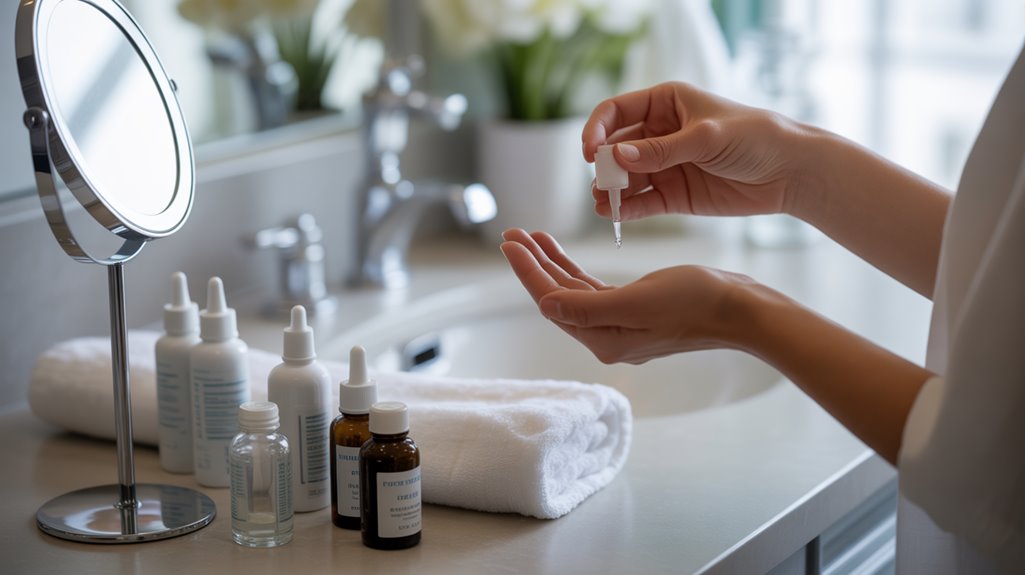
When managing ocular rosacea, prescription topical medications offer targeted therapy to reduce inflammation and alleviate symptoms at the site of the eyelids and ocular surface. Your ophthalmologist may recommend these medications to address persistent redness, irritation, and swelling.
It’s vital to adhere to your prescribed regimen to guarantee ideal results and minimize complications.
- Topical corticosteroids—Short-term use of low-potency corticosteroid drops can rapidly decrease eyelid inflammation, but prolonged use carries risks such as increased intraocular pressure.
- Calcineurin inhibitors—Agents like cyclosporine drops modulate immune response, reducing chronic inflammation without the long-term risks of steroids.
- Medication adherence—Consistent application as prescribed is imperative; lapses can lead to recurrence of symptoms or incomplete symptom control.
Regular follow-ups with your ophthalmologist are crucial to monitor symptom progression and adjust treatment plans as necessary. Always follow your ophthalmologist’s directions closely for best outcomes.
Oral Antibiotics for Inflammation
You may be prescribed oral antibiotics such as doxycycline or tetracycline to control ocular inflammation. Your physician will determine the appropriate dosage and duration based on disease severity and response to therapy. Be aware of potential side effects, including gastrointestinal upset and photosensitivity, which require monitoring during treatment. Early intervention prevents long-term ocular complications, as highlighted in pediatric studies on ocular rosacea management.
Commonly Prescribed Antibiotics
Several oral antibiotics are frequently prescribed to manage the inflammation associated with ocular rosacea.
These medications help reduce bacterial overgrowth and modulate the immune response, targeting key inflammatory pathways. It’s crucial to understand commonly used options so you can discuss antibiotic resistance and treatment alternatives with your healthcare provider.
Here are three antibiotics often recommended:
- Doxycycline: A tetracycline-class antibiotic, known for its anti-inflammatory properties at sub-antimicrobial doses, making it effective for ocular surface inflammation.
- Tetracycline: Similar to doxycycline, this agent suppresses inflammatory mediators but may be less favored due to dosing frequency and gastrointestinal side effects.
- Azithromycin: A macrolide antibiotic, it offers both anti-inflammatory and antimicrobial benefits, often used when tetracyclines are contraindicated.
Additionally, regular eyelid hygiene practices like warm compresses and lid margin massage can support the effectiveness of these treatments.
Always consult your doctor to determine the best therapy for your situation.
Dosage and Duration
Selecting the appropriate dosage and duration of oral antibiotics for ocular rosacea is guided by the severity of inflammation and individual patient response. Typically, ophthalmologists initiate therapy with low-dose regimens, such as doxycycline 40-100 mg once or twice daily, following established dosage guidelines. Your clinician will tailor these recommendations to minimize antibiotic resistance and optimize clinical outcomes. The initial treatment duration generally ranges from four to twelve weeks, depending on your symptom resolution and ocular surface improvement. Periodic reassessment allows your provider to adjust therapy, either tapering the dose or discontinuing antibiotics once inflammation subsides. Adhering to the prescribed dosage guidelines and completing the recommended treatment duration is essential for maximizing therapeutic benefit and reducing the risk of recurrence. It’s also beneficial to incorporate warm compresses into your daily routine, as they can improve meibomian gland function and further alleviate symptoms. Always consult your eye care professional before making changes to your regimen.
Potential Side Effects
Although low-dose oral antibiotics are generally well tolerated for ocular rosacea, they can cause side effects that warrant close monitoring.
As you consider this treatment, it’s important to understand the potential risks and weigh them against the benefits. Even at lower dosages, antibiotics can have systemic effects.
Here are three key treatment considerations:
- Gastrointestinal disturbance: You might experience nausea, diarrhea, or abdominal discomfort, which are among the most common side effects.
- Photosensitivity: Some oral antibiotics, particularly doxycycline, can increase your sensitivity to sunlight, raising the risk of sunburn.
- Antibiotic resistance: Long-term use, even at sub-antimicrobial doses, may contribute to bacterial resistance, complicating future infection management.
Always discuss these potential risks with your ophthalmologist to determine if oral antibiotics are the right option for your ocular rosacea.
Omega-3 Fatty Acid Supplements
Omega-3 fatty acid supplements, once thought to alleviate ocular rosacea symptoms, lack strong evidence supporting their effectiveness. Clinical studies haven’t demonstrated consistent improvement in ocular surface inflammation or meibomian gland function when you add omega-3 fatty acids to your regimen.
While dietary omega 3 sources—such as fatty fish (salmon, mackerel, sardines), flaxseed, and walnuts—are generally considered beneficial for systemic health, their direct impact on ocular rosacea remains unproven.
Current guidelines don’t recommend a specific dosage for ocular rosacea, and excessive supplementation may pose risks, including altered bleeding times or gastrointestinal upset.
If you’re considering omega-3 supplementation, consult with your healthcare provider for individualized dosage recommendations and to assess potential interactions with other therapies. Evidence-based therapies should remain your primary focus.
Intense Pulsed Light (IPL) Therapy
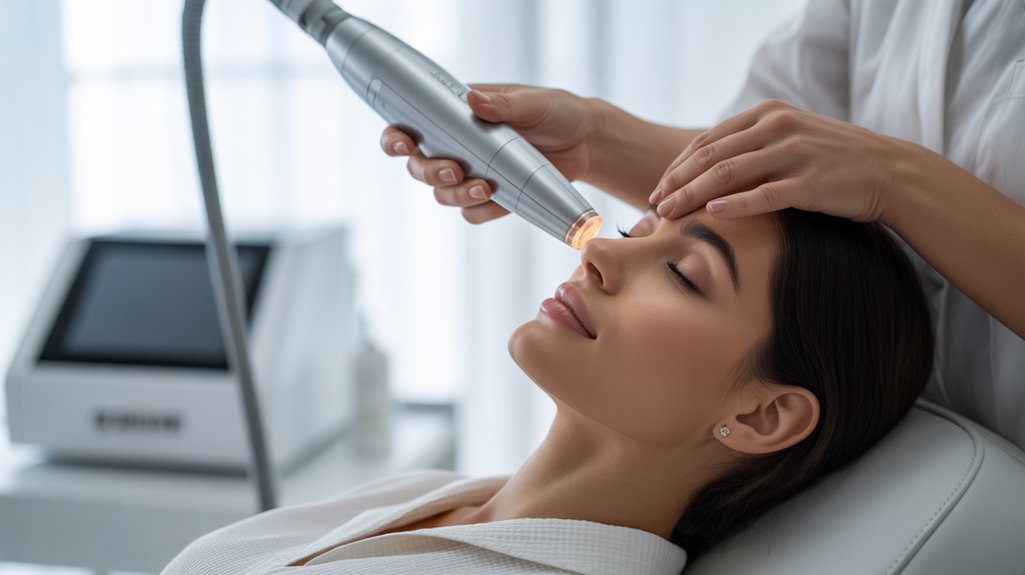
While ocular rosacea can be challenging to manage, Intense Pulsed Light (IPL) therapy offers a targeted approach for reducing eyelid inflammation and improving meibomian gland function.
IPL utilizes intense light to penetrate the skin, coagulate abnormal blood vessels, and reduce inflammatory mediators around the eyelids. This therapy is evidence-based and has shown efficacy in enhancing tear film stability and decreasing ocular surface discomfort.
Here’s how IPL therapy may benefit you:
- IPL targets abnormal vasculature, reducing eyelid redness and swelling.
- It improves meibomian gland secretion, addressing underlying gland dysfunction.
- IPL can minimize recurrence rates by controlling chronic inflammation.
Since IPL involves intense light exposure, you’ll need to take into account your skin sensitivity and consult an ophthalmologist to determine if this modality is appropriate for your ocular rosacea management.
Steroid Eye Drops for Severe Flare-Ups
During severe ocular rosacea flare-ups, ophthalmologists may prescribe steroid eye drops to rapidly control inflammation and alleviate symptoms such as redness, swelling, and discomfort.
These steroid eye medications, including prednisolone acetate or loteprednol, act by suppressing the immune-mediated inflammatory response in the ocular surface and eyelids. You’ll notice improvement in irritation and visual disturbances within a short treatment window, typically a few days to weeks, depending on severity.
However, steroid eye drops are reserved for acute, severe flare ups because prolonged use may increase your risk of intraocular pressure elevation, glaucoma, or cataract formation. Your ophthalmologist will monitor you closely and taper the dosage as soon as possible.
Always follow professional guidance to balance rapid symptom relief with long-term ocular safety.
Lifestyle Changes to Reduce Triggers
Because ocular rosacea symptoms often worsen in response to environmental and lifestyle triggers, implementing targeted changes can help you minimize flare-ups and maintain eye comfort.
Evidence suggests that proactive management of modifiable risk factors is essential. By focusing on dietary adjustments and stress management, you can reduce inflammation and stabilize the ocular surface.
Consider the following approaches:
- Identify and eliminate dietary triggers: Spicy foods, hot beverages, and alcohol may exacerbate symptoms. Keep a food diary to recognize patterns.
- Prioritize stress management: Chronic stress can intensify ocular rosacea through hormonal pathways. Utilize relaxation techniques like mindfulness or controlled breathing exercises.
- Control environmental exposures: Avoid windy, smoky, or extremely dry environments. Use humidifiers and wear protective eyewear outdoors.
Consistent lifestyle modifications help maintain long-term ocular health.
Consulting an Eye Care Specialist
Although lifestyle changes can reduce ocular rosacea symptoms, you’ll achieve ideal management by consulting an eye care specialist.
A specialist consultation guarantees a thorough evaluation of your ocular surface, tear film stability, and eyelid health. The specialist will differentiate ocular rosacea from other forms of blepharitis or conjunctivitis, using slit-lamp examination and clinical history.
They’ll prescribe targeted therapies such as topical antibiotics, oral tetracyclines, or immunomodulatory agents when over-the-counter solutions prove insufficient. Regular eye care follow-up monitors disease progression and evaluates treatment efficacy.
Early intervention can prevent complications like corneal damage or vision impairment. Don’t hesitate to discuss persistent redness, irritation, or visual changes during your specialist consultation.
Accurate diagnosis and customized therapy provide the best prognosis for long-term ocular comfort and eye health.
Powerful Ocular Rosacea Relief With TheraLife
Chronic dry eye is a significant feature of ocular rosacea.
Treating dry eyes will reduce inflammation and keep ocular rosacea under control
Frequently Asked Questions
Is Ocular Rosacea Contagious to Others?
You might worry about ocular rosacea transmission, but you can relax—ocular rosacea isn’t contagious.
It’s an inflammatory condition linked to genetics, immune response, and environmental triggers, not infection. You can’t pass it to others through casual contact.
For ocular rosacea prevention, focus on managing triggers like sun exposure, irritants, and eye hygiene.
Evidence shows that controlling these factors reduces flare-ups, but you don’t need to isolate yourself from others.
Can Children Develop Ocular Rosacea?
Have you ever wondered if your child’s eyes could develop rosacea?
While ocular rosacea is more common in adults, children can exhibit symptoms like eye redness, irritation, and swollen eyelids.
Early diagnosis is essential to prevent complications.
Treatment options include eyelid hygiene, lubricating eye drops, and sometimes oral antibiotics.
Consult a pediatric ophthalmologist promptly to guarantee accurate assessment and initiate evidence-based interventions for best ocular health in children.
Are There Any Long-Term Complications of Untreated Ocular Rosacea?
If you leave ocular rosacea untreated, you risk significant long-term effects.
Untreated symptoms can progress to chronic inflammation, leading to meibomian gland dysfunction, corneal neovascularization, and even vision impairment.
Evidence-based studies show that persistent irritation increases the likelihood of corneal ulcers and scarring.
Without intervention, you may experience permanent discomfort or decreased visual acuity.
It’s essential to seek prompt management to prevent these serious ocular complications from developing.
Is Ocular Rosacea Linked to Other Eye Diseases?
Yes, you should know that ocular rosacea is linked to other eye diseases due to shared ocular symptoms and inflammation causes.
Chronic inflammation can lead to blepharitis, meibomian gland dysfunction, and even corneal disorders like keratitis.
Evidence shows persistent rosacea increases your risk for dry eye syndrome and secondary infections.
Recognizing and managing inflammation early helps prevent these associated complications and preserves long-term ocular health, according to recent clinical studies.
Can Contact Lenses Worsen Ocular Rosacea Symptoms?
It’s no coincidence that you notice increased discomfort when wearing contact lenses with ocular rosacea. Certain contact lens types, especially those limiting oxygen permeability, can exacerbate ocular surface inflammation and dryness.
You’ll likely experience more irritation or redness if your eye care routine isn’t meticulous. Evidence suggests that patients with compromised tear films or meibomian gland dysfunction, both common in ocular rosacea, should use daily disposables and prioritize strict hygiene to minimize symptom aggravation.
Powerful Ocular Rosacea Relief With TheraLife
Chronic dry eye is a significant feature of ocular rosacea.
Treating dry eyes will reduce inflammation and keep ocular rosacea under control
Conclusion
For those managing ocular rosacea, Theralife offers a unique and effective solution with its oral eye treatment care, making it the only company to do so. Theralife’s products are designed to enhance eye health from within, providing relief and maintaining eye comfort without relying solely on topical solutions. This internal approach can significantly ease symptoms like irritation and prevent complications associated with ocular rosacea.
Combining Theralife’s oral treatments with traditional practices like warm compresses and lid hygiene can lead to rapid improvement in symptoms. As the only provider of oral eye treatment, Theralife stands out by offering a comprehensive plan tailored to your needs. Don’t wait for symptoms to worsen—consult your eye care specialist and consider incorporating Theralife’s products into your routine. With the right care, you can protect your vision and manage ocular rosacea effectively.

